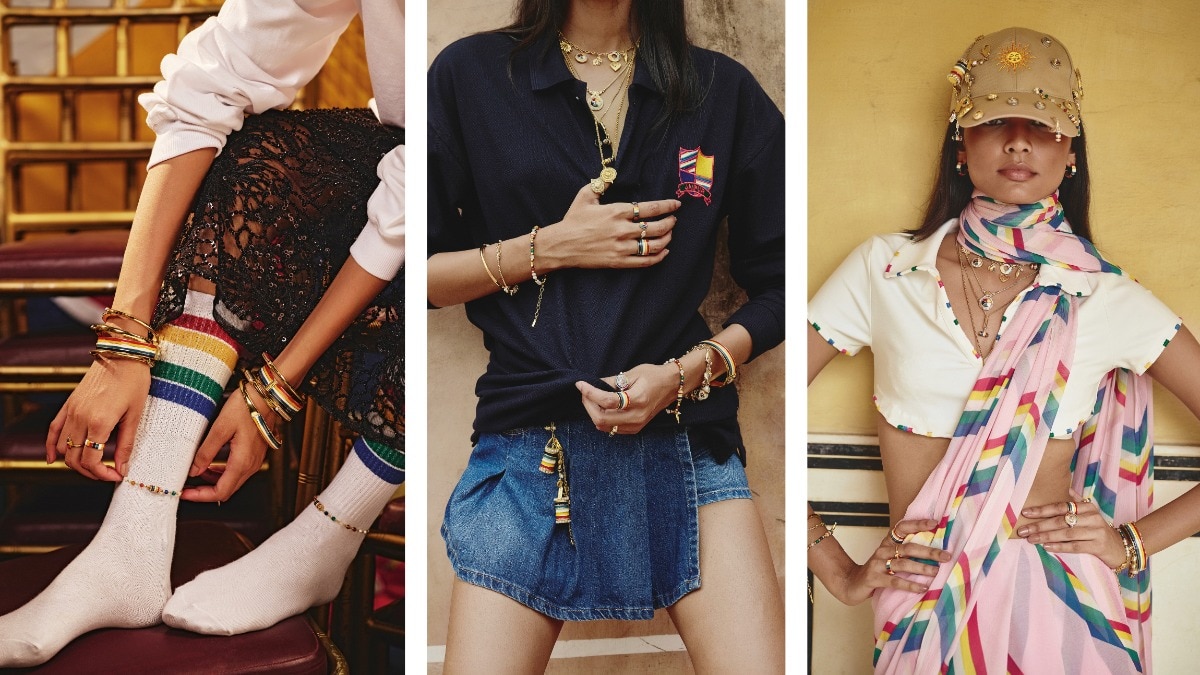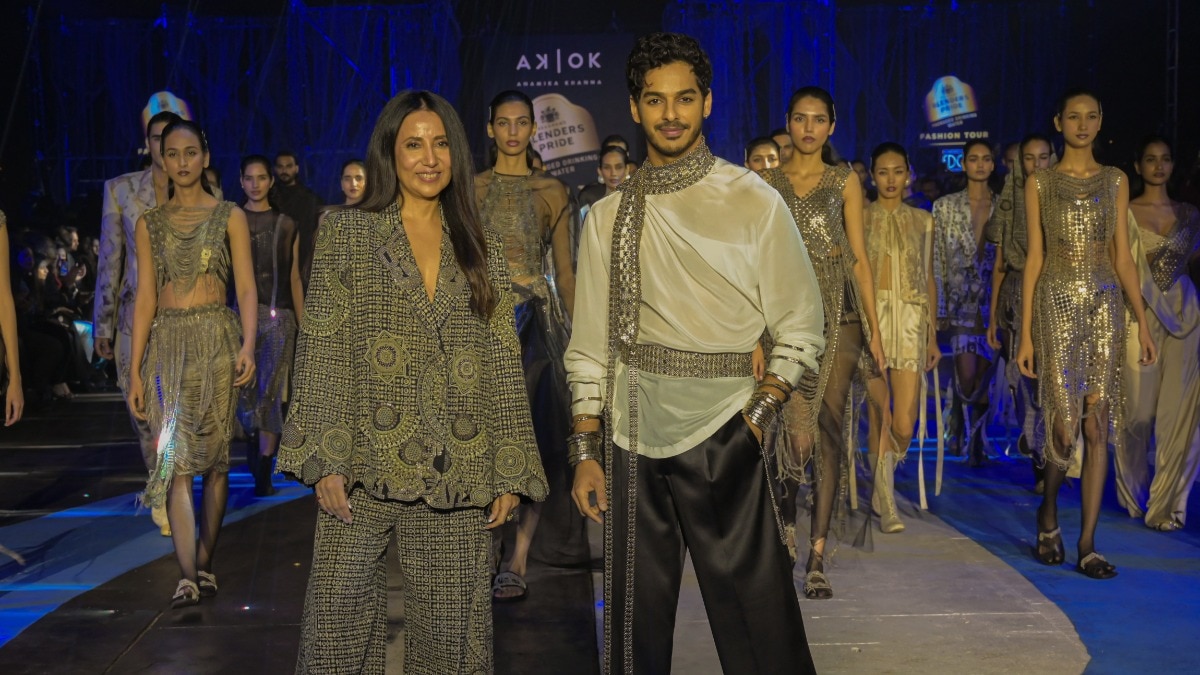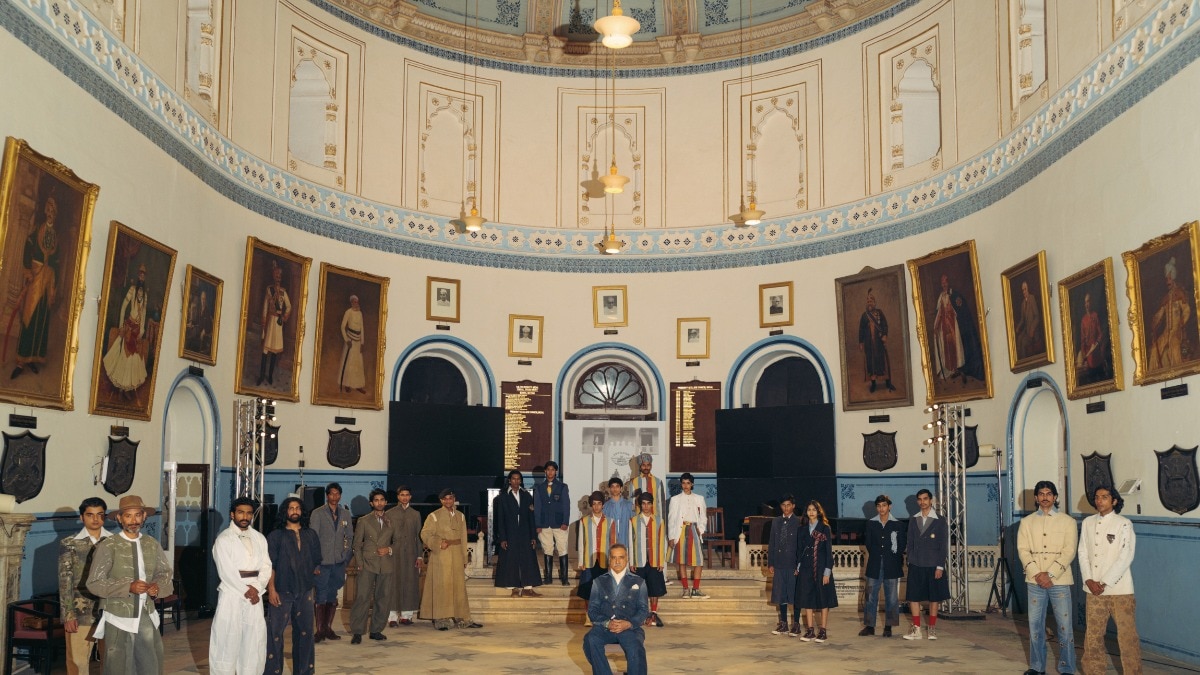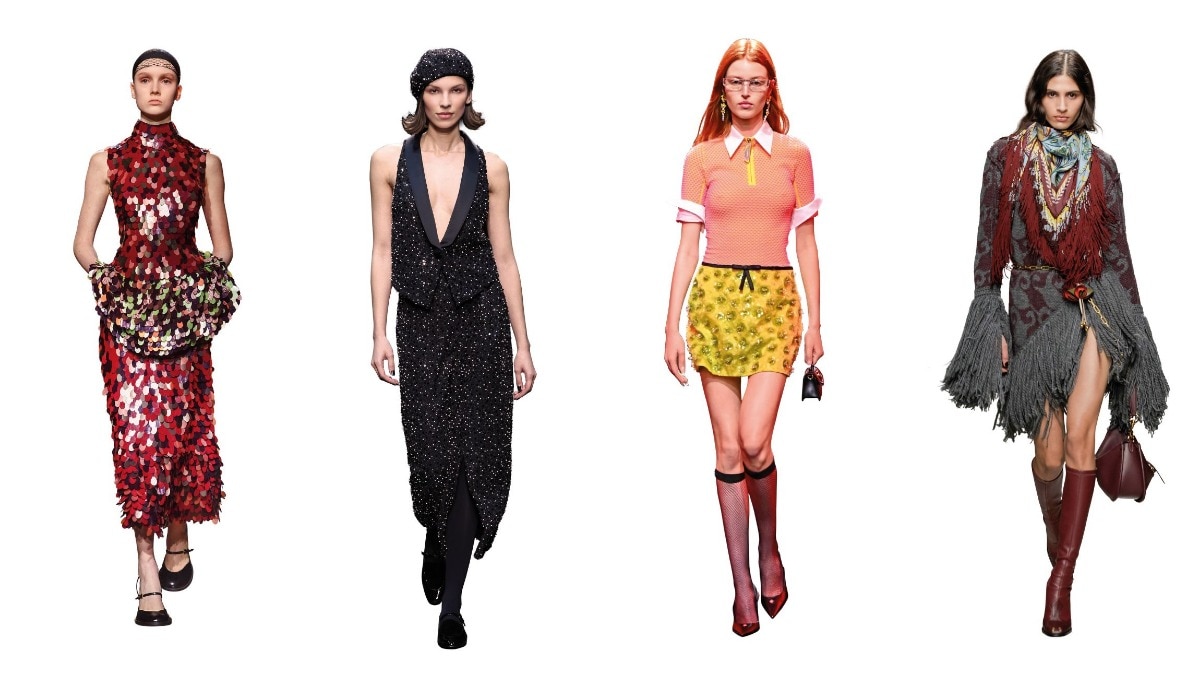Are we ready to open our closets to AI?
From dresses that morph with a single tap to AI-powered style assistants—here’s how a fashion's tech-fueled future is set to change the way we shop.


Looking back, fashion has always flirted with technology, but now it's diving headfirst into a tech-fueled future that's going to change the way we design, wear, and shop for clothes. Remember when Coperni wowed us by spraying a dress onto Bella Hadid live on the runway? That was just a taste of what's to come.
We're talking about dresses that morph with a single touch, AI-powered style assistants that know your taste better than you do, and shopping experiences that are as personalised as your fingerprint. It's a future where the impossible becomes possible, and the only limit is your imagination.
But are we ready for this fashion revolution? Are we comfortable letting AI dictate our style? And what about the human touch? Will there still be a place for designers and stylists in a world dominated by algorithms?
These are questions we need to start asking ourselves, because the future of fashion is arriving faster than we think. And whether we're ready or not, it's going to be a ride that we have to hop on.
The AI-powered dress, Project Primrose
Imagine a dress that can change colour and pattern with the touch of a button. This is the vision behind Adobe's Project Primrose, an AI-powered dress that aims to revolutionise the fashion industry.
"Project Primrose is really a blank canvas that can be filled with content from GenAI or interactive design," explains Dr Gavin Miller, VP & Fellow, Head of Adobe Research. “If it becomes mainstream, it would drive the demand for dramatically more variations and updates of designs—perhaps on a daily or hourly basis.”
The dress features non-emissive fabrics that can display content generated through Adobe applications. These designs can be static or animated and are controlled through a button interface. Plus, the dress incorporates embedded sensors that can react to the wearer's movements. Can you believe that?
Dr Miller believes that this is a great opportunity for human creative designers but may also be such an explosion of content that AI would be needed to serve so much demand for novelty, perhaps in response to end-user prompting.
Revolutionising the shopping experience with AI
Myntra, a leading e-commerce platform in India, is no stranger to innovation. They are constantly pushing the boundaries of online shopping, and their latest venture into AI-powered tools is a testament to their commitment to enhancing the customer experience.
One of Myntra's biggest challenges was helping users curate outfits that complement their existing wardrobe. This problem often led users to abandon their shopping carts, frustrated by the inability to find the perfect pieces. Recognising this pain point, Myntra developed MyStylist, an AI-powered tool that acts as a personal stylist for every user.
"Trying to pair products to figure out a good look is a common situation that users go through," shares Raghu Krishnananda, CTO, Myntra. "The wealthy use services of personal stylists to solve this, but we wanted to democratise this experience and make it available to everyone."
MyStylist analyses a user's past purchases, browsing history, and even images from their gallery. This data allows the AI to understand the user's style preferences and recommend products that perfectly complement their existing wardrobe. The personalised approach not only helps users make confident purchase decisions but also reduces the risk of buyer's remorse.
But Myntra's AI ambitions go beyond just styling. They also recognised the need to improve the search experience for users who struggle to articulate their fashion desires in keywords. Enter MyFashionGPT, a GenAI-powered tool that understands natural language queries.
"We saw that about 10 per cent of our search queries were longer than five words, and users were often searching using natural language descriptions," explains Krishnananda. “We used ChatGPT3.5 for query and intent understanding to show relevant and related products as collections.” This resulted in an encouraging proportion of return users and a higher percentage of users buying from more than one category.
The latest addition to Myntra's AI arsenal is Maya, a conversational shopping assistant plus virtual trendsetter. Unlike MyStylist and MyFashionGPT, which function more like passive recommender systems, Maya engages in a chat-like conversation with the user. This allows users to explore their options in a more organic way, narrowing down their choices based on the AI's personalised suggestions.
"Maya is a conversational shopping assistant which engages the user in a chat conversation helping them start with a broad query and narrow down the choices based on the user interaction," says Krishnananda.
These AI-powered tools are already making a significant impact on the Myntra experience. Thousands of users are actively engaging with Maya, MyStylist, and MyFashionGPT, and many are returning for more. This early success is a clear indication that personalised shopping experiences powered by AI are no longer a futuristic fantasy, but a reality that is shaping the future of fashion e-commerce.
Where AI meets artistry
This season, New York Fashion Week witnessed a captivating dance between the cutting edge and the timeless. Collina Strada, renowned for its sustainability ethos, embarked on a bold experiment, integrating AI into its design process. This unique collaboration birthed a collection that was both conceptually intriguing and aesthetically captivating.
The journey wasn't simply about AI dictating the terms. The team, led by designer Hillary Taymour, engaged in a nuanced exchange, feeding the AI their rich archive and then refining its creations. This iterative process allowed the technology to evolve while ensuring the final pieces resonated with the brand's identity.
The result? A harmonious blend of AI's imagination and human curation. Models adorned surreal yet wearable garments, their forced smiles and clenched fists hinting at the complex relationship between technology and humanity. Collina Strada's foray into AI wasn't a mere gimmick; it was a glimpse into a future where technology subtly transforms fashion, offering fresh perspectives without erasing the human element.
Style redefined with wearable AI
Across the Atlantic, Paris Fashion Week saw the unveiling of another groundbreaking innovation at the Coperni show. The Ai Pin, a brainchild of ex-Apple executives, debuted not just as a wearable AI assistant, but as a statement piece. Supermodel Naomi Campbell, sporting the Ai Pin, embodied the seamless fusion of technology and style.
The Ai Pin represents a paradigm shift in consumer technology. It's a screenless, standalone device designed for intuitive interaction, prioritising user privacy. This isn't just a gadget; it's a symbol of a future where technology complements personal experiences without compromising security.
An AI-powered campaign
India witnessed the birth of a cultural phenomenon with Lenskart Studio's K-Pop campaign. The visionary team utilised AI to create Astro IRIS, a virtual K-Pop band that has taken the world by storm. This campaign transcended music, blurring the lines between reality and virtual worlds.
AI wasn't just a tool for Lenskart Studio; it was a transformative force. The technology breathed life into virtual beings, crafting personalities and eyewear styles that resonated with audiences globally. This campaign serves as a testament to the boundless creative possibilities when AI and artistic expression converge. It marks a new era where technology redefines cultural experiences, ushering in a future where the real and the virtual intertwine in unimaginable ways.
What does the AI future in fashion look like?
As AI technology continues to evolve, its impact on the fashion industry will only become more profound. We can expect to see even more innovative and personalised experiences, as well as a shift towards more sustainable and ethical practices.
However, there are also challenges that need to be addressed. Issues such as data privacy, ethical design, and the potential for job displacement need careful consideration as we move forward.
"The role of Technology is to create better experiences for users, bring about efficiency and disrupt existing ways of doing things," says Krishnananda. "The analogy I can think of is the role of buggy or wagon makers prior to the advent of cars and steam engines. There were actually more jobs created after these innovations, but it required buggy makers to re-train and re-tool themselves. Those who did flourished. This is the case with any new technology. For example, in the case of GenAI, new roles such as Prompt Engineering have been created which did not exist earlier."
So, what can we expect next?
"Adjacent to AI is the world of simulation, where the accurate draping of clothing can be simulated using physics," explains Dr Miller. "Recent breakthroughs at Adobe allow for very tangled or self-colliding designs to be simulated with high accuracy, again providing a potential design tool for the fashion industry. AI versions of simulators hold the promise of high-performance simulations in close to real-time."
The future of fashion is bright, and it is clear that AI will play a major role in shaping its evolution. With its potential for creativity, efficiency, and sustainability, AI has the power to transform the industry in ways we can only begin to imagine.










